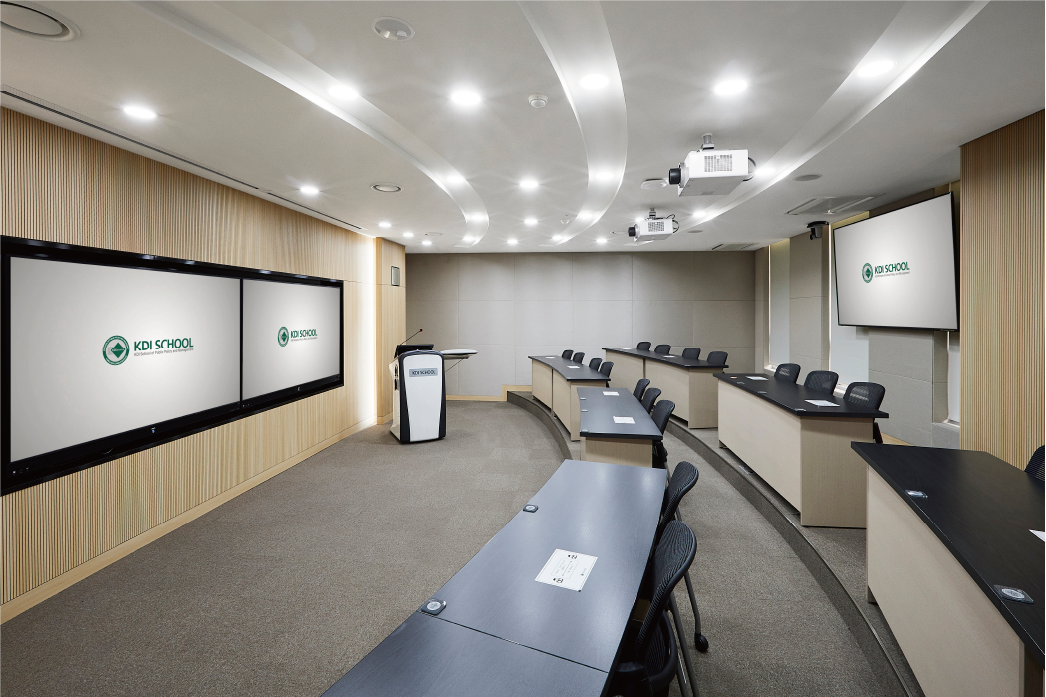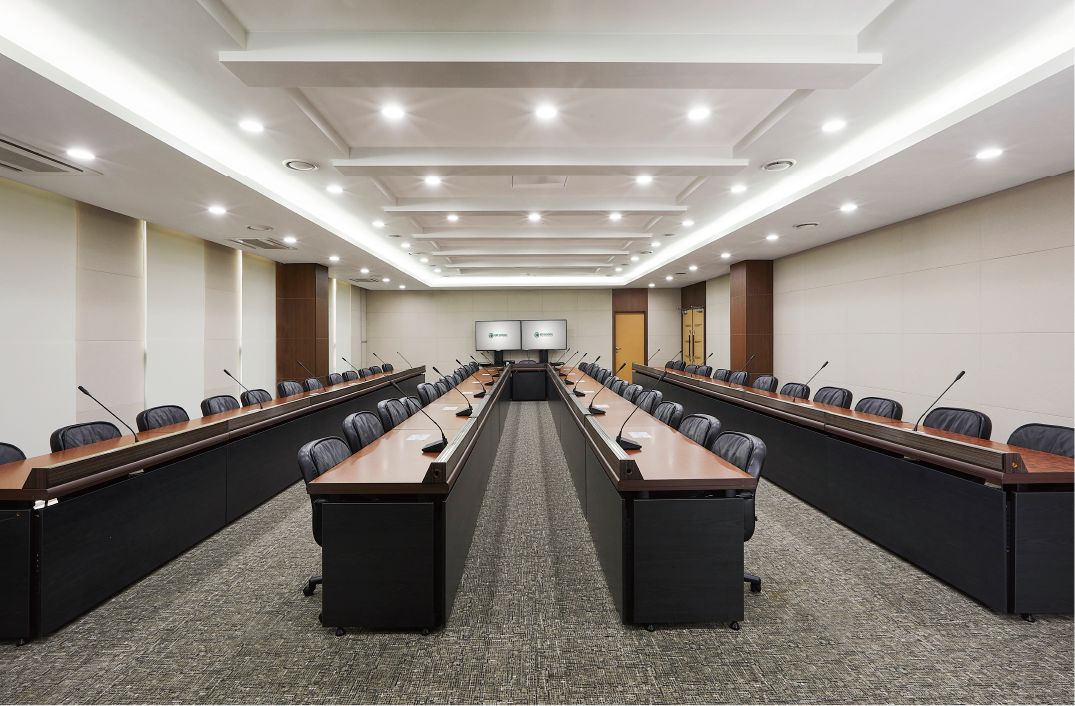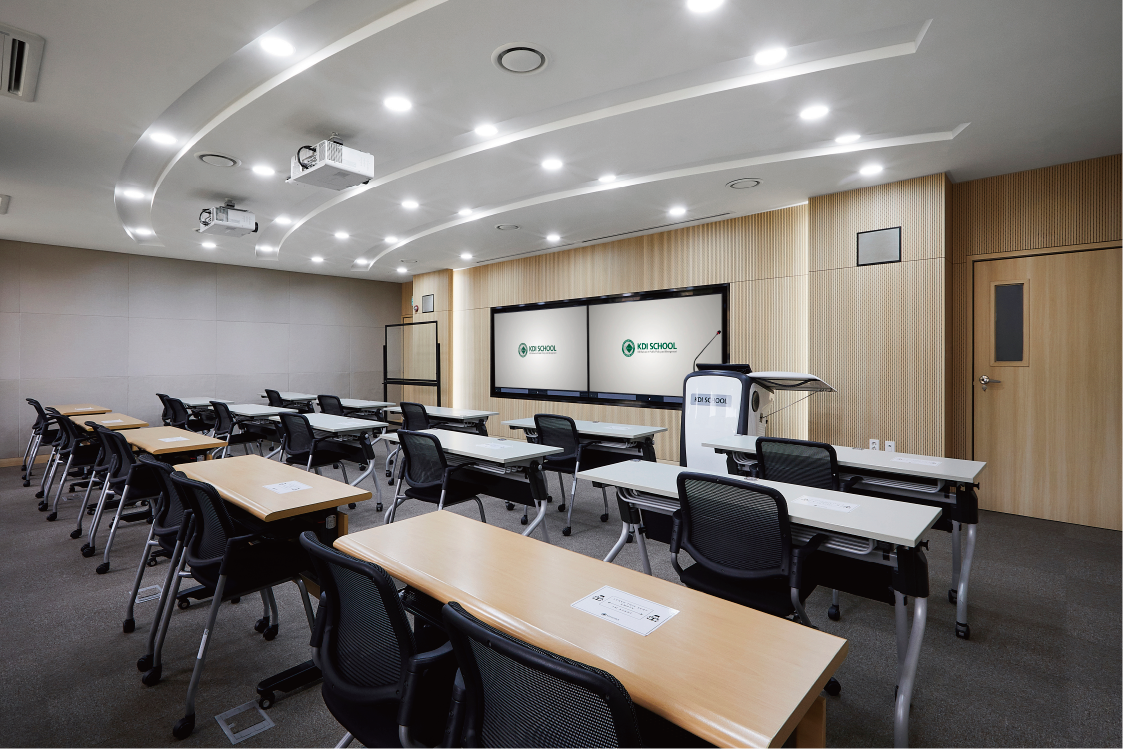
The "New Normal" in Education: Hybrid Transition in KDI School
- Date 2020-12-30 07:33
- CategoryNews
- Hit1890
In the second week of October this year, the much anticipated ‘hybrid’ classes came into effect at KDIS. Hybrid, a system that incorporates offline and online classes, stemmed from this need to improve the learning experience of students. This transition was poised to improve on the online classes that students had grown accustomed to ever since the COVID19 pandemic brought normal learning to a grinding halt. The few students I have spoken to welcomed the change with emphatic reception. ‘I am blown away. This school never ceases to amaze me. They always find a way out, adjusting to any particular changes and seasons,’ says Abel Shelton (2019 MPP) when we first sit for our first offline class in 6 months.

For a typical hybrid class, half of the class meet offline while the other half continue to stream online. The plan, which is in tandem with the social distancing policy, is such that only a given number of students can come to class. Coupled with other measures like measuring student temperatures as they enter the classrooms and then ensuring that students put on their masks while the class is in session, puts the school at a better position to combat any potential spread of COVID19. Furthermore, the classes are also recorded and then left online for hours to accommodate students who might experience time conflicts. This is a reprieve for students who are taking classes in their home countries. As such, they have found it flexible and easy to work their way around the school’s schedule.
The gist of this efficient hybrid transition is in the nifty technology that has been employed. Classrooms are equipped with state-of-the-art monitor screens, that allow offline and online students to interact effectively in real time. Some classes have a huge central microphone that captures the voices of students and Professors. With that, classroom members no longer have to speak with portable microphones or shout their lungs out. On the other end, when online students chime in, they are also heard effectively by their offline counterparts. This ingenious invention places KDIS in the league of trendsetters.
So how did this come to be?
Let’s go back to the beginning of this year. When covid19 was raging on in S. Korea, all schools went on to shut down to try and contain the spread. KDIS, which had already resumed its spring semester followed suit but quickly hatched a plan to get the semester on track. The school broke for two weeks and then switched to online classes through the improvisation of ‘zoom’ platform. It adjusted its environs to suit the then (still is) ‘new’ normal and rolled out a number of inhouse policies to ensure that their plan did not contravene the stipulated national policy measures. Cameras were fixed on library computers. The school purchased a number of tablets and laptop computers and then invited the students to borrow. This ensured that no one was left behind, in spite of their financial or economic condition.

As the months kept on evolving, the administration continued to keep an eye on the online teaching and learning experience, as it committedly looked for ways to make it better. The teaching and learning division at KDIS kept on conducting inquiries from Professors and students on how best they could improve this experience. It is as a result of this that the hybrid concept came about. Mr. Keun-Hyuk Lim, the head of Teaching and learning division at KDI School, notes: ‘Most of these grand ideas came from our very own Professors and students. We kept asking them what we could do to replicate the offline experience online, how we could fix the online challenges, among other issues that needed to be addressed. We summed up all these ideas to come up with what we have now.’
This inhouse innovation has garnered a lot of attention. Some schools have been visiting KDIS to learn about its experience and see what they can do to replicate. The other day, the school was featured on prime-time news, on the Seoul Broadcasting System (SBS) TV, as it got to share its hybrid system experience with the Korean society.

Mr. Keun-Hyuk Lim is optimistic that the KDIS hybrid model will stand the taste of time despite the few uncertainties. “This is something new. Something that we have never tried before and therefore anything can happen. But we have put in place the necessary infrastructure to meet any ensuing hitches.’ The school is able to monitor all the ongoing lectures. Assistants are always on standby to meet any unexpected challenges. From student testimonials, few to no hitches have been fronted.
As the world tries to adjust to the new normal, KDIS is without a doubt leaving its mark, pioneering ideas that education policy makers might find fit to incorporate. It is evident that the school is not only challenging its students to shape and innovate policies that would benefit society, but it is also living the challenge.
The Globe – KDI School Yearzine 2020
